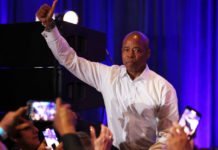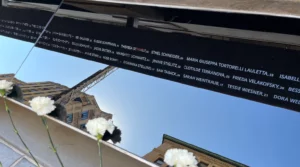
Julie Gergely
(New York Jewish Week) – As Allison and Rebecca Kestenbaum stood in front of a building in Greenwich Village on Wednesday, they were thinking about another set of sisters: their relatives Celia and Bess Eisenberg, who, as teenagers, worked at the Triangle Shirtwaist Factory.
Bess called in sick on the day that a horrific fire tore through the garment factory. Celia died, along with 145 others.
The tragedy transformed U.S. labor law and the building that housed the factory, now a New York University science building, was designated a National Historic Landmark in 2003. But until this week, there had never been a permanent memorial paying tribute to the fire’s victims.
One was unveiled Wednesday at the site of the factory on the corner of Washington Place and Green Street near Washington Square Park. The memorial was conceived by the Remember the Triangle Fire Coalition, a nonprofit group of descendants and labor advocates dedicated to preserving the memory of the mostly Jewish and Italian immigrant women who died that day and the fire’s impact on the organized labor movement.
“It’s remarkable to see people showing up who maybe didn’t have a connection but who feel moved by it,” said Allison Kestenbaum, who brought her two children to the unveiling from their home in San Diego. “This triggers emotions for a lot of people and opens our eyes to something that so many didn’t know anything about.”
According to the story that’s been passed down through in the Kestenbaum family, Celia, just 17, went to work alone on March 25, 1911, a warm Saturday.
Near the end of the workday, a cigarette butt ignited fabric scraps inside the factory, on the ninth floor of the Asch Building. As the flames began to spread, the women who worked there found that they had been locked in from the outside by management, who wanted to prevent the workers, who made roughly $7 a week, from stealing inventory as well as keep out union organizers. The fire was one of the deadliest industrial disasters in New York City history.
The memorial, in the making for more than a decade, includes a massive stainless steel ribbon that floats horizontally along the edge of the building — the names and ages of the victims are cut out of the ribbon. A stone panel underneath the ribbon reflects the names back to the viewers and also bears quotes from witness and survivor testimonies. On Wednesday, the reflective stone panel was also adorned with 146 white roses in honor of the victims.
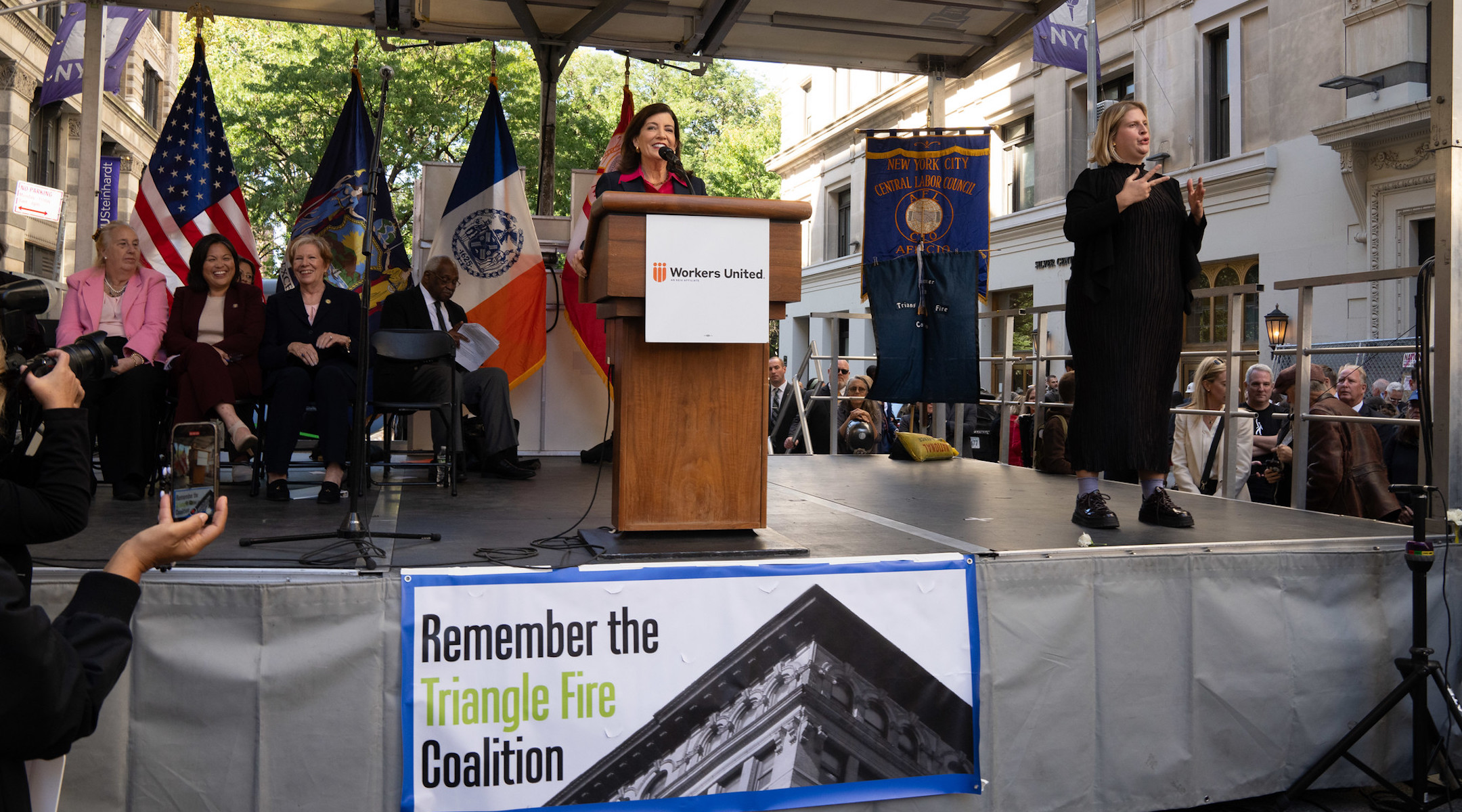
Gov. Kathy Hochul spoke at the unveiling ceremony of a memorial for the 146 victims of the 1911 Triangle Shirtwaist Factory fire on Oct. 12. (Office of Governor Kathy Hochul via JTA.org)
“It’s getting some really beautiful reactions,” Uri Wegman, who, along with Richard Joon Yoo, was one of the two architects of the memorial, told the New York Jewish Week. “You never know how people are going to respond and I feel like we are accomplishing exactly what we designed the memorial to do, to transport and reorient people” to the events of the tragedy, the Israeli-born architect said.
Over the next few months, a vertical steel column will be installed to showcase the height from which workers jumped in a futile attempt to escape the flames.
The Remember the Triangle Fire Coalition organizes an annual event on the anniversary of the fire, in partnership with Workers United, the New York City Central Labor Council, the FDNY and New York University.
“I’ve waited a really long time to say three words to you — three powerful words, and three extraordinarily sweet words: We did it,” said Mary Anne Trasciatti, the president of the coalition, at Wednesday’s unveiling ceremony. “By honoring the Triangle workers with this memorial, we are making a statement about the dignity and humanity of every worker, past and present. We are showing our support for baristas, auto workers, nurses, teachers, farm workers, warehouse workers, coal miners.”
At the ceremony, labor organizers reminded the crowd about how the fire jumpstarted labor reforms and workers’ rights efforts, including activism and legislation that led to safety protocols, workers’ compensation, a 40-hour work week, minimum wage and pensions. They also used the opportunity to speak about workers’ rights today, pledging continuing support for the Hollywood actors’ and United Auto Workers strikes.
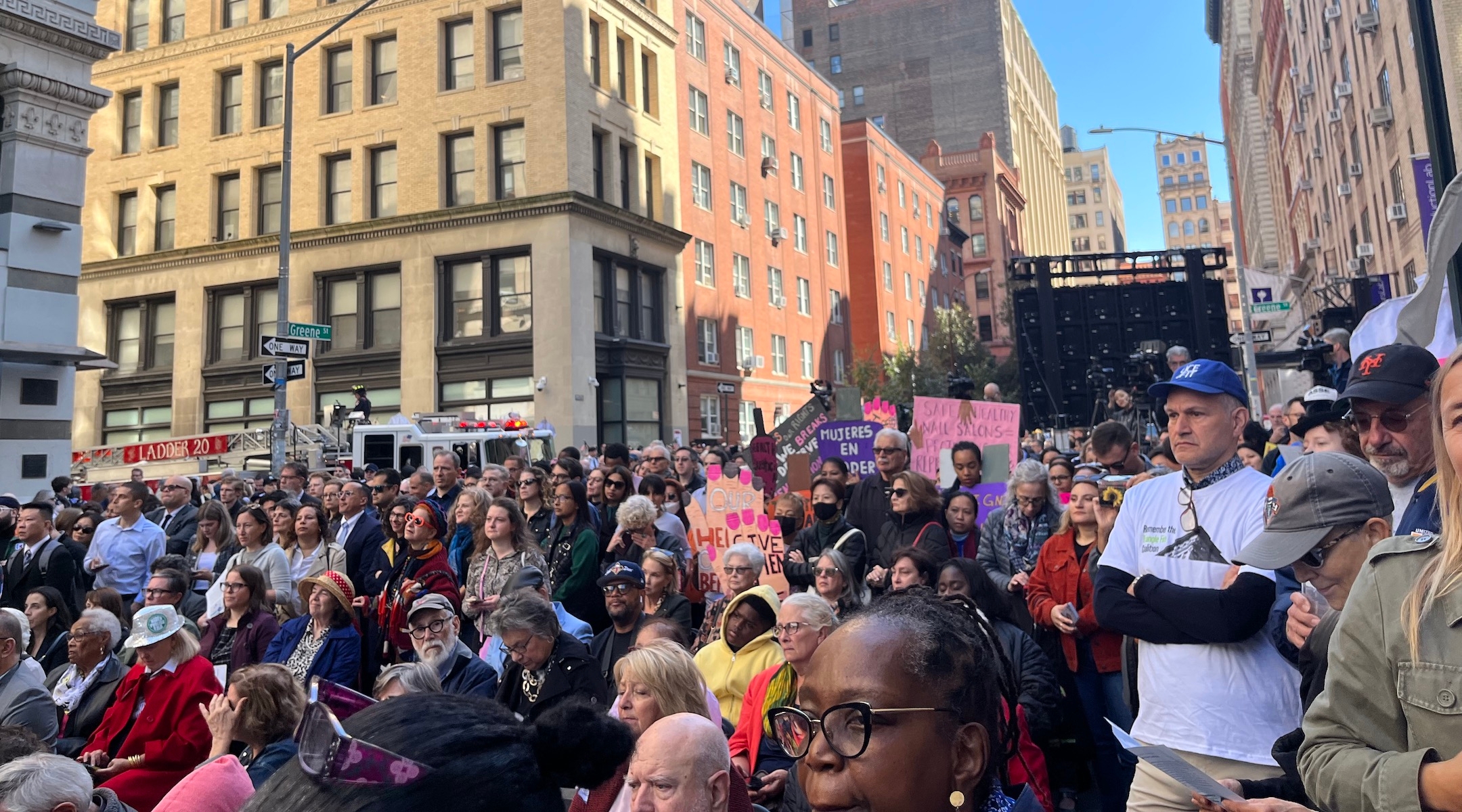
Hundreds of people, including descendants of victims, union members, local officials and labor activists came to the unveiling of the memorial on Oct. 11. (Julia Gergely via JTA.org)
The Triangle fire — with its large number of Jewish, Eastern European immigrant victims — also “galvanized the Jewish community, which had an already active labor base,” Ann Toback, the chief executive officer of the Workers Circle, told the New York Jewish Week.
Founded in 1900 as a fraternal organization to help Eastern European immigrants adjust to American society and workplaces, the Workers Circle was a central base for Jewish labor activists. In 1909, it helped organize an 11 week long general strike consisting of 20,000 young Jewish women in the shirtwaist industry. One of the only holdouts of the strike was the Triangle company.
After the tragedy in 1911, Jewish union organizers Clara Lemlich and Rose Schneiderman marched from the site of the tragedy to Cooper Square to demand new changes and more organizing.
“It did spark a new outcry of activism and The Workers Circle at that time was very much a center of labor activism,” Toback said. Jewish labor activists and Workers Circle members were also at the forefront of expanding the membership and organizing power of the International Ladies’ Garment Workers Union, which became one of the country’s largest labor unions after the fire. The Workers Circle was a sponsor of the victims’ memorial at the site of the factory.
In remarks, New York Gov. Kathy Hochul shared that her grandfather, uncles and father worked in coke ovens at the Bethlehem Steel plant, itself the site of multiple fatal industrial accidents.
“I am so proud to be part of this effort to honor the names of those who were lost in that horrific inferno,” Hochul said. She called New York “the birthplace of the workers’ rights movement” because of “what happened right on this block.” New York State allocated $1.5 million in state funds to build the memorial.
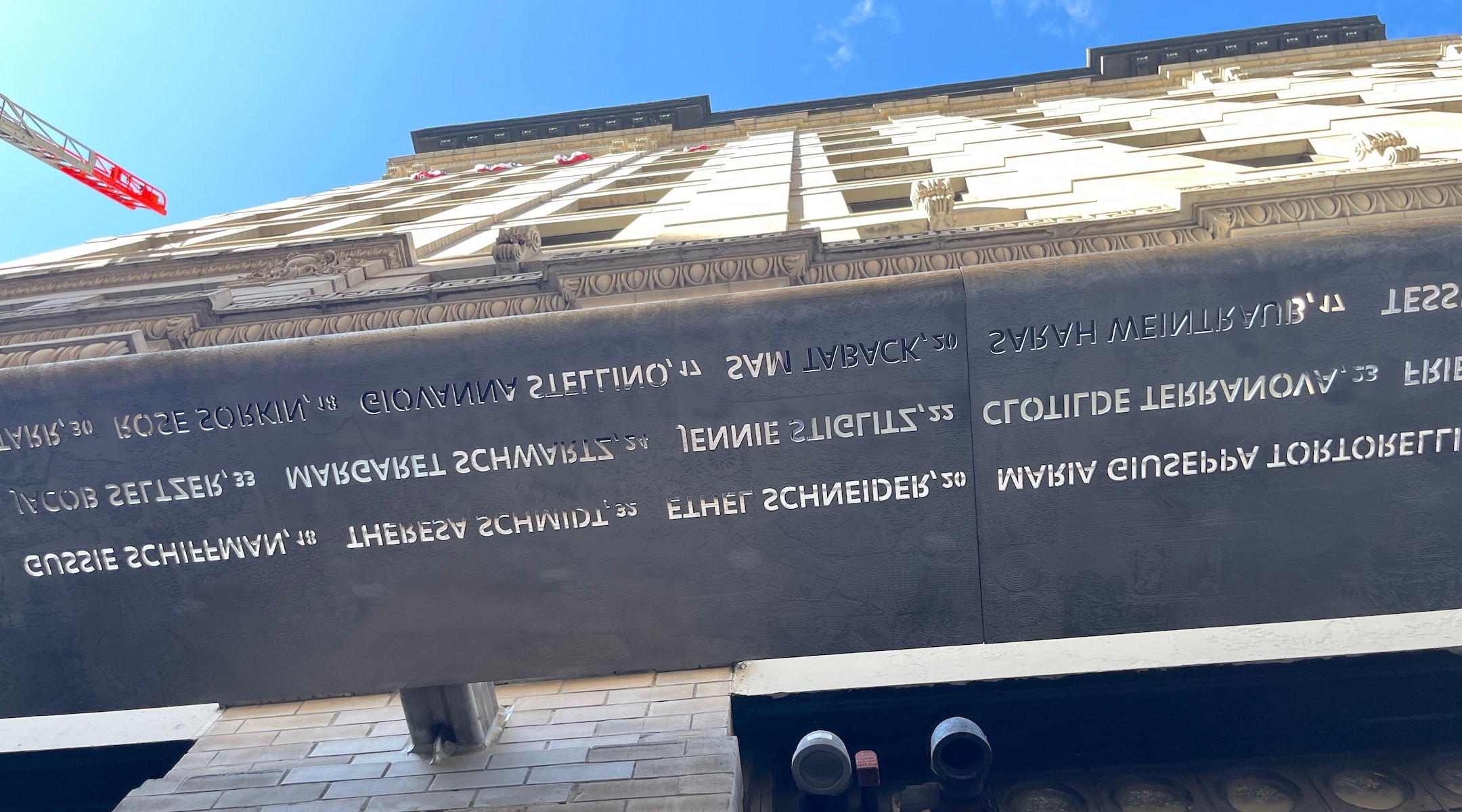
A steel ribbon with cutouts of the names of the victims wraps around the former site of the Triangle Shirtwaist factory on the northwest corner of Washington Place and Greene Street. (Julia Gergely via JTA.org)
Hochul, who has been trying to maintain support for immigrants as the city struggles with the recent influx of nearly 125,000 migrants, connected the fire to the present day.
“Our workers deserve to be protected and we will fight to make sure they have those rights,” Hochul said. “This state is so great because of the immigrants, the migrants who came here. Let them work. We need them.”
Julie Su, the Acting U.S. Secretary of Labor, also addressed the crowd. “We can imagine the black plume of smoke up in the air, the flames that spread from floor to floor, the panic of the workers who ran and found closed exits and broken fire escapes,” she said. “Their cries for help and then the thud of bodies as they began to jump one after another.”
Allison Kestenbaum said she has always felt a strong connection to her relative and other victims of the fire. “I went to NYU. If I had been there two generations earlier, an immigrant, I wouldn’t have had the opportunity to go to college — I would have been a seamstress in a sweatshop,” she said.





